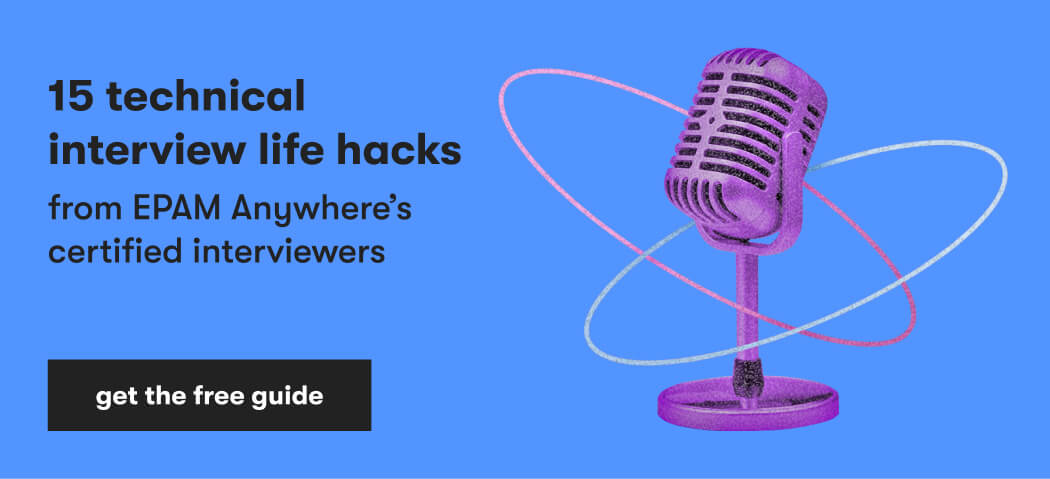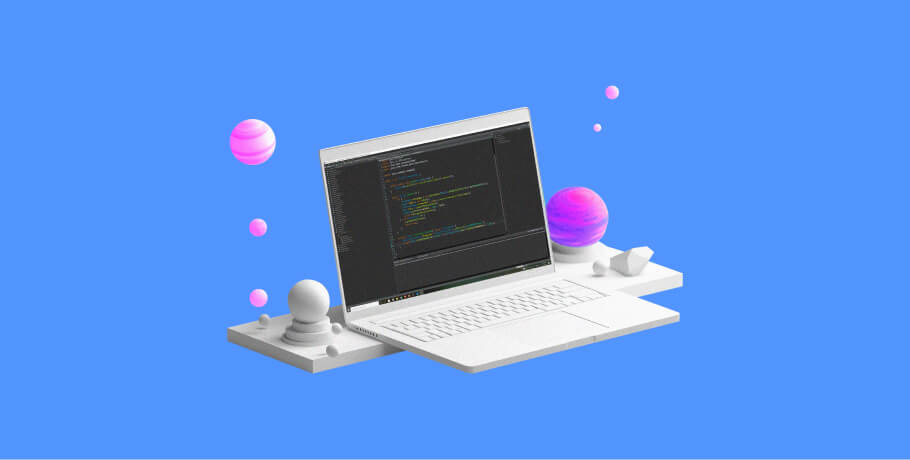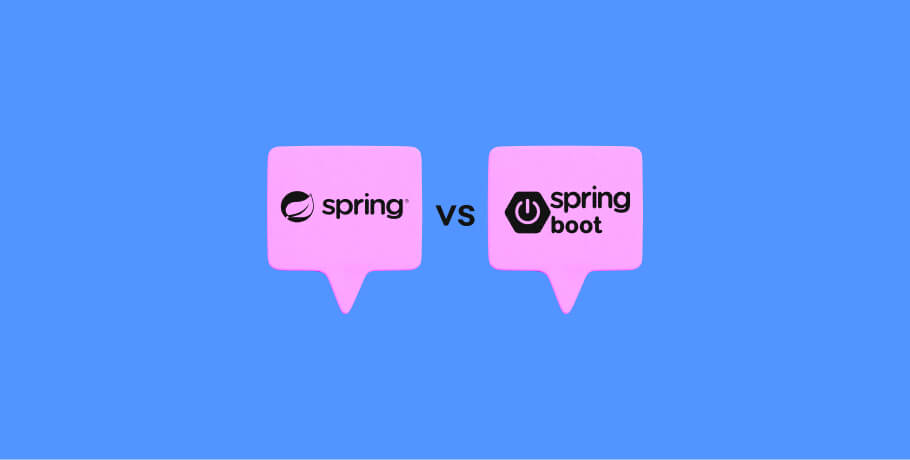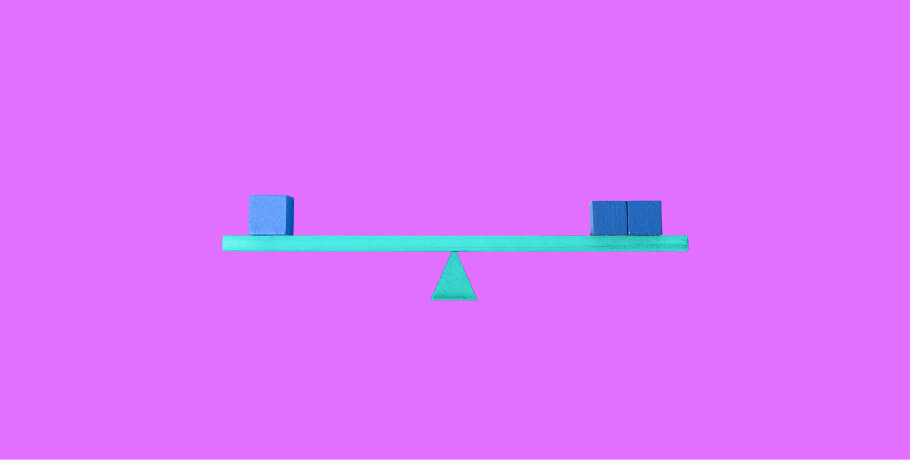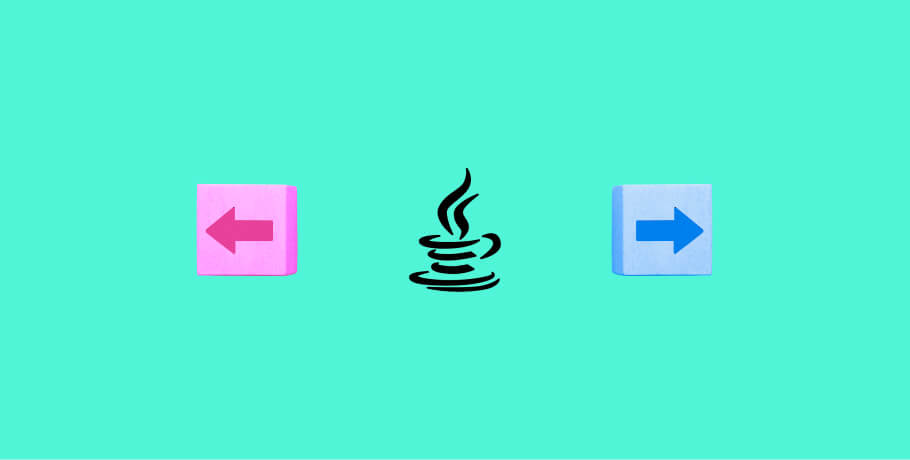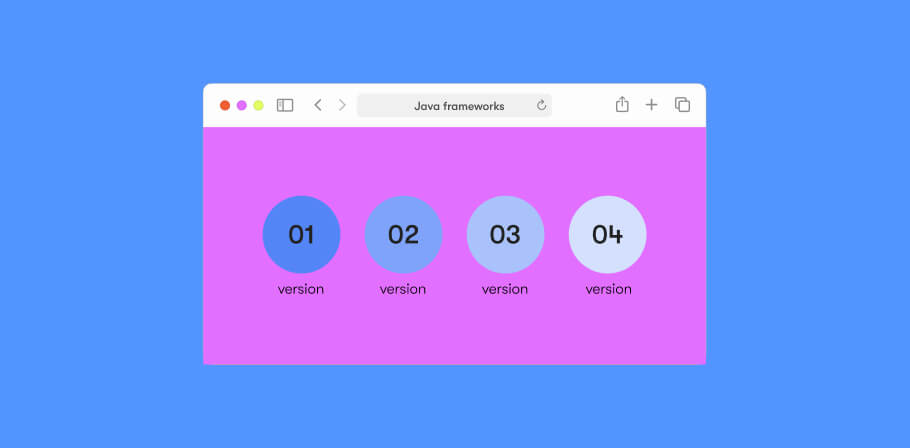Backend developers are in high demand. Stats from the US Bureau of Labor Statistics show that this profession will grow 13% by 2028, and it is safe to say that backend web developers have a lucrative career ahead of them.
So, if you pursue this career path, you will not have any problems finding job opportunities. However, as many professionals are applying for backend developer jobs, you need to stand out from other candidates in the interview and land this high-paying role.
To help you prepare for backend developer interview questions, we asked Deepan Muthusamy, Software Engineer at EPAM Anywhere, to share his experience of passing a technical backend developer interview with us, along with the questions he was asked. Although the questions below are specific to backend developer positions with Java as the primary skill, backend engineers of various backgrounds, such as those getting hired for Node.js engineer positions, will find it useful.
You should know that technical interviews in many organizations, such as EPAM Anywhere, feature backend software engineer interview questions to assess your technical know-how, experience level, and soft skills.
The interviewer will quiz you with general and backend development-specific questions related to your experience and background. General questions are usually asked to get an understanding of your education and employment history. These questions are common ice-breakers in many web development interviews and cover aspects like your strengths as a coder and the programming language you are most comfortable with.
These questions will be followed up by a practical coding task that takes between 15 and 20 minutes, and conclude with a soft skills check.
ready to make your next career move?
Send us your CV and we'll get back to you with a matching remote backend developer job at EPAM Anywhere
Real backend developer interview questions with answers
1. What is object-oriented programming?
Object-oriented programming (OOP) is a programming language structure where the data and its associated processing, also known as methods, are defined as self-contained entities. These entities are called "objects." OOP involves modeling a system as a collection of various objects, with each object representing some specific aspect of the system.
OOP languages are the norm today and provide developers with a formal set of rules and concepts for creating and managing objects. OOP has four fundamental concepts: inheritance, polymorphism, encapsulation, and data abstraction.
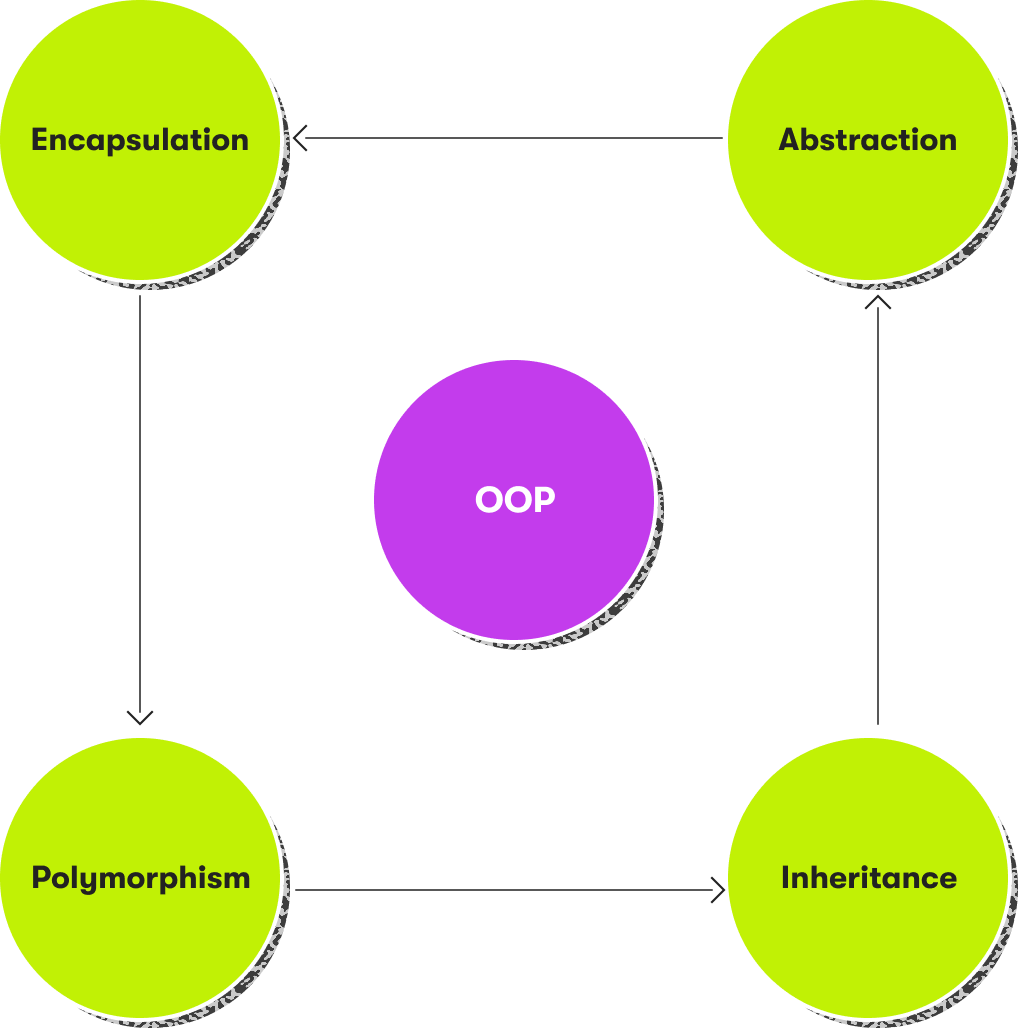
2. What is a constructor?
A constructor in Java is a special method used to initialize objects. It is called when an object of a class is created. A constructor has the same name as its class. Also, it is syntactically similar to a method. However, constructors don't have any explicit return type.
3. What are the different types of constructors?
There are three main types of constructors: No Argument Constructor, Default Constructor, and Parameterized Constructor.
4. Why is multiple inheritance not possible in Java?
In Java, multiple inheritance isn't supported due to the ambiguity problem. Multiple inheritance is also not supported in Java to simplify the language and reduce the complexity. When one class, such as class B, extends more than other classes, such as class A and class C, this is called multiple inheritance. One example of a problem that occurs in multiple inheritance is the diamond problem.
5. How to create an immutable class?
Immutable class in Java means it can't be modified once you create it.
- Declare the class as final so that child classes cannot be created.
- Declare data members in the class as private to prevent direct access.
- Declare the data members in the class as final so that their value cannot be changed after object creation.
- Introduce a specific parameterized constructor to initialize all the fields and perform a deep copy, ensuring data members cannot be modified or changed with an object reference.
- Perform a deep copy of objects in the getter methods to return a copy instead of returning the real object reference.
6. What is the difference between Wrapper Classes and Primitive Data Types?
Wrapper classes offer a simple way to use various primitive data types, such as int and boolean, as objects. In other words, the wrapper class converts a primitive type into an object. On the other hand, a primitive type is a predefined data type that the Java programming language provides.
7. What is serialization?
Serialization is a method or mechanism of converting the state of an object into a byte stream. Deserialization does the opposite. Serializing an object ensures that the byte stream can be easily reverted into a copy of the object.
Serialization in Java is often used in JMS, Hibernate, EJB, and JPA and helps transport the code from one JVM to another.

8. What is the difference between finally, final, and finalize?
Finally is a block or code block. We use it with a try-catch block to handle the exception. In contrast, final is a keyword. We can use this keyword to mark a variable "unchangeable." Final is also used to apply restrictions on method, class, and parameters.
Finalize is a deprecated method of the Object class. Finalize was used for performing clean-up processing before the object is garbage-collected. In recent Java versions (9+) it is recommended to inherit the Closable interface and use its method close() for resource management.
9. What is the difference between LinkedList and ArrayList?
The key difference between LinkedList and ArrayList is that LinkedList exercises LinkedList Data Structure within the class with multiple variations in every element. In contrast, ArrayList falls under the category of collection framework of dynamic arrays that are distinct from standard arrays.
Also, LinkedList nodes are stored on a random basis in memory locations, while ArrayList elements are usually held in consecutive memory locations.
These are the comparison points based on Big O Notation for different actions:
- Insert at last index — O(1) for both ArrayList and LinkedList
- Insert at given index — O(N) for both ArrayList and LinkedList
- Search by value — O(N) for both ArrayList and LinkedList
- Get by index — O(1) for ArrayList and O(N) for LinkedList
- Remove by value and Remove by index — O(N) for both ArrayList and LinkedList
10. How does a HashMap work?
In Java, HashMap works on various hashing principles. It uses its static inner class to store the entries in the map. HashMap uses several buckets, with each bucket pointing to a Singly Linked List. In Java 8, however, HashMap replaces Linked List with a binary tree when the amount of bucket elements reaches a certain threshold. HashMap allows multiple null values and at most one null key.
11. What is a thread?
Thread as an independent path of execution through program code. Threads are used to make Java applications faster and more responsive by doing multiple things simultaneously.
12. What are the different types of threads?
There are two kinds of threads: daemon threads and user threads. A daemon thread is a low-priority thread whose only role is to offer services to various user threads. In contrast, a user thread is a high-priority thread.
13. What is the difference between a process and a thread?
A process can be defined as the execution of a program, allowing users to perform the appropriate actions that are specified in a program. In other words, it means a program is in execution.
In contrast, a thread is an execution unit. It is part of a process and can be managed independently by a scheduler. A process may have multiple threads, which all execute at the same time.
14. What is exception handling?
Exception handling is the process of responding to the occurrence of exceptions like ClassNotFoundException, SQLException, IOException, and RemoteException.
15. What are the different types of exceptions in Java?
Two main types of exceptions in Java are checked exceptions and unchecked exceptions. The compiler checks that checked exceptions are handled by the programmer during compilation, otherwise a compilation error occurs. We can handle these exceptions with a try-catch block or by re-throwing. An unchecked exception is not required to be handled.
16. What is a design pattern?
A design pattern is a general repeatable or reusable solution to common problems occurring in software design. They are similar to blueprints, and the pattern often shows interactions and relationships between objects or classes.
17. What are the types of Creational design patterns?
You can implement five well-known Creational design patterns in the scope of programming languages. These are as follows:
- Builder pattern
- Abstract factory pattern
- Factory method pattern
- Singleton pattern
- Prototype pattern
18. What is a lambda expression?
Lambda expressions are a feature in Java and its first step into the world of functional programming. It is a short block of code that takes in various parameters and then returns a value. A lambda expression comprises a comma-separated list of multiple formal parameters that are enclosed in parentheses.
How to get backend engineer interview questions right
When preparing or studying to answer backend technical interview questions, especially the technical ones, remember that one of the most crucial things interviewers look for is your specific work style, including your creativity, work philosophy, and whether you prefer to work within a team or independently.
Here is how you can nail these interview questions for backend developers and set yourself apart from other candidates:
- Have a clear and comprehensive understanding of the basics of backend development and revise critical concepts before the interview.
- Answer backend engineer interview questions with good examples, presenting the concepts with a use case.
- Consider the implementations showcased in your portfolio.
- Keep the answer lighthearted and note that sometimes the content isn't as important as your delivery and showing your communication skills.
- Remember that making the answer fun and interesting will help engage your interviewer.
Here is another tip. You can subtly lead the interviewer to the next question based on your response to their previous question. Here is an example:
Interviewer: What's a stream in Java?
Interviewee: It is a sequence of elements from a source like a collection or an array that supports various methods. You can pipeline these methods to produce the desired result in various forms.
If you follow this approach to answering backend software engineer interview questions, the interviewer is more likely to ask about the stream operations. With this strategy, you can steer the backend developer interview questions toward areas where you are more knowledgeable.
Our final tip is to recollect your previous interview questions and consider where you can improve. Some questions are designed to trick you, and you can prepare for them better by looking at previous backend coding interview questions.
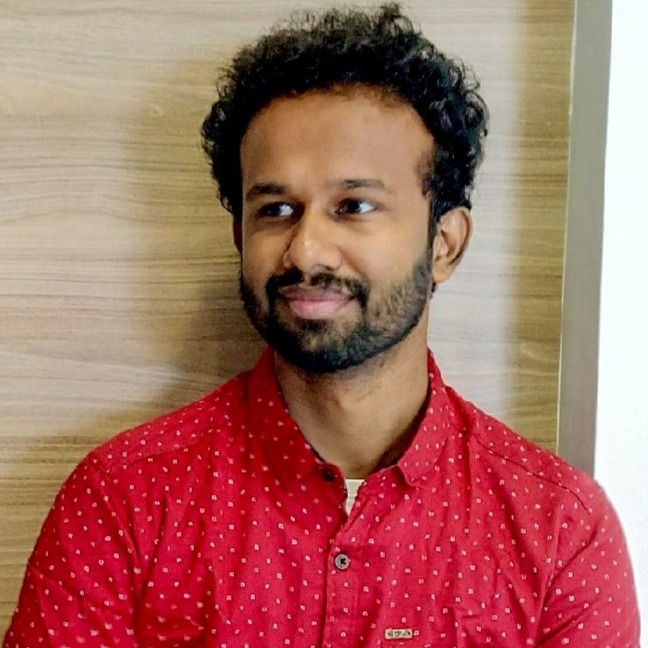
Explore our Editorial Policy to learn more about our standards for content creation.
read more








